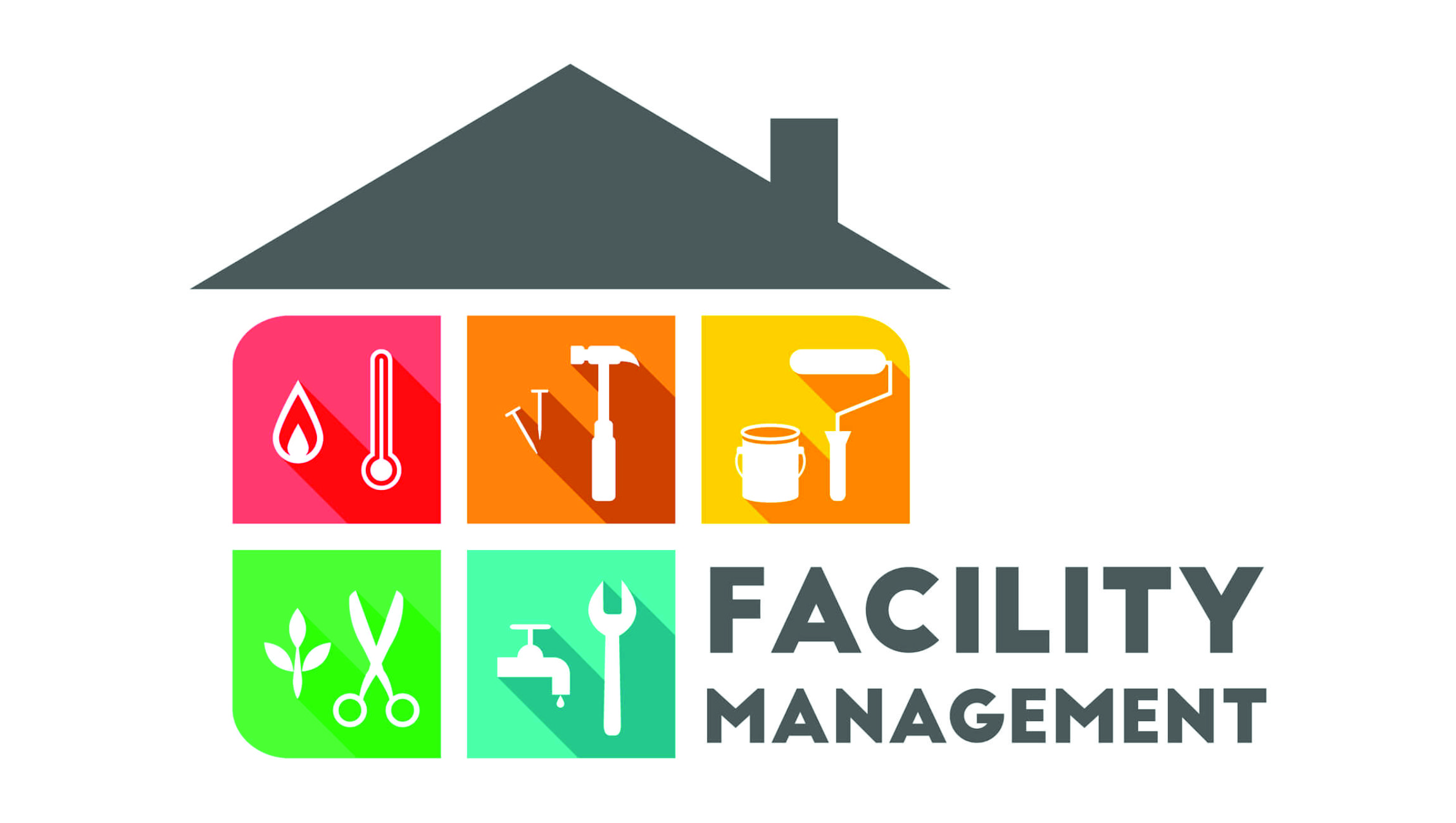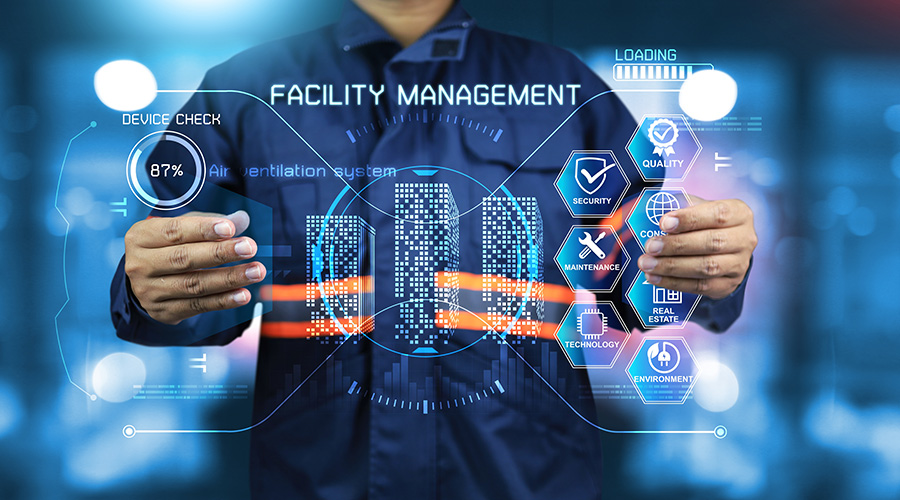Facility Management Services-- Ensuring Safety and Maintenance
Facility Management Services-- Ensuring Safety and Maintenance
Blog Article
The Important Guide to Facility Monitoring: Approaches for Success
Facility administration plays a vital role in the general success of an organization, offering as the backbone that supports performance, performance, and safety and security. The nuances of effective facility management prolong past mere logistics and need a detailed understanding of both qualitative and measurable metrics.
Recognizing Center Monitoring
What constitutes effective center management? Efficient facility management includes the sychronisation of various organizational functions to guarantee that built environments are safe, effective, and favorable to productivity. It integrates the concepts of style, design, and organization administration to produce a seamless functional circulation within a company.
Key aspects of center management include room preparation, upkeep management, and compliance with health and wellness guidelines. Room preparation concentrates on maximizing using physical resources to support organizational goals, while maintenance management makes sure that centers are maintained in ideal problem, making the most of life expectancy and minimizing functional expenses. Compliance with legal and regulative standards is essential, as it safeguards the organization against prospective obligations and boosts its online reputation.
In addition, reliable center administration relies upon the calculated use of technology, such as Structure Monitoring Solution (BMS) and Computer-Aided Facility Management (CAFM) devices. These modern technologies assist in real-time tracking of building systems and streamline maintenance procedures (Facility Management). Inevitably, a comprehensive approach to center administration not only advertises functional effectiveness yet likewise fosters a favorable environment for site visitors and workers alike, driving overall business success

Secret Approaches for Optimization
Optimizing facility monitoring requires a tactical technique that aligns operational exercise with business purposes. To achieve this, the very first crucial approach is the implementation of integrated technological options. Making use of innovative software systems permits real-time tracking of center procedures, facilitating data-driven decision-making and improving overall effectiveness.
Second of all, routine evaluations of facility performance are important. Carrying out regular examinations and audits allows center managers to determine areas that need improvement, making certain that resources are allocated successfully. This positive technique assists in decreasing downtime and boosting solution distribution.
An additional essential approach is cultivating cooperation throughout departments. By encouraging open communication in between groups, center managers can better straighten their approaches with organization objectives, resulting in improved operational harmony. Furthermore, engaging staff in training programs advertises a culture of accountability and boosts their capability to contribute to optimization efforts.
Enhancing Safety And Security Procedures
Enhancing safety methods is necessary for producing a safe atmosphere within facilities. A thorough security protocol not just secures employees and site visitors yet also enhances functional effectiveness. Facility Management. To accomplish this, center supervisors must perform regular threat evaluations to ensure and recognize prospective threats that proper measures remain in area

Additionally, clear communication channels must be established to report safety and security worries immediately. This consists of producing an obtainable system for workers to voice potential hazards or cases without anxiety of retribution. Leveraging innovation can boost security steps; for example, applying monitoring systems and access controls aids keep an eye on facility tasks and limit unauthorized access.
Finally, conformity with neighborhood policies and industry criteria is non-negotiable. Routine audits and reviews of security methods ensure alignment with present legislations and ideal methods. By focusing on these methods, facility supervisors can grow a culture of safety and security that secures all stakeholders and ultimately adds to the organization's success.
Improving Workplace Atmosphere
A favorable office setting significantly improves employee spirits and efficiency, making it an essential emphasis for center monitoring. To develop such an atmosphere, facility supervisors ought to focus on several crucial elements, including functional designs, aesthetic appeals, and staff member interaction.
Ergonomic factors to consider are necessary to lessen physical strain and discomfort. This includes giving adjustable furniture, appropriate illumination, and ample space for motion. These changes can lead to minimized absence and boosted work complete satisfaction.
Appearances play a vital role in shaping the work environment environment. Making use of shade psychology, all-natural lighting, and greenery can foster a welcoming and promoting atmosphere. Thoughtfully developed areas can improve imagination and enhance general wellness.
Additionally, motivating worker interaction with inclusive decision-making processes can enhance the sense of ownership and belonging. Collecting responses on work environment improvements and involving employees in the design procedure can bring about an extra customized atmosphere that meets their needs.
Lastly, advertising wellness efforts, such as health cares and leisure areas, can even more contribute to an encouraging office culture. By focusing on these strategies, center managers can efficiently improve the office atmosphere, driving both staff member satisfaction and business success.
Determining Success in Facilities
Measuring success in center administration requires a thorough method that evaluates both measurable and qualitative visit this site metrics. Measurable metrics navigate to these guys normally include vital efficiency indicators (KPIs) such as room usage prices, energy intake, maintenance prices, and occupancy degrees. These metrics supply a clear image of functional efficiency and monetary performance, permitting facility managers to determine locations for enhancement and standard against sector standards.
Qualitative metrics, on the various other hand, focus on individual satisfaction and worker engagement. Surveys and responses mechanisms can assess just how well the facilities fulfill the demands of residents, aiding to assess the general office setting. This facet is essential, as a completely satisfied workforce is typically connected to increased efficiency and retention prices.
To properly measure success, facility supervisors need to also think about incorporating modern technology, such as building administration systems and information analytics devices, to accumulate and analyze relevant data. Consistently evaluating both sets of metrics permits a much more balanced view of efficiency and informs critical choices. Inevitably, a successful facility management technique rests on a commitment to constant enhancement, guaranteeing that both operational efficiencies and individual fulfillment are focused on.

Conclusion
In verdict, effective facility administration is vital for enhancing organizational performance. Prioritizing security methods and boosting office atmospheres even more contribute to raised worker complete satisfaction.
Center monitoring plays an important role in the overall success of a company, serving as the foundation that supports efficiency, safety and security, and performance.Key components of center monitoring consist of area planning, maintenance monitoring, and conformity with health and wellness and security policies.Additionally, efficient facility management counts on the tactical use of modern technology, such as Building Administration Systems (BMS) and Computer-Aided Facility Management (CAFM) tools. Ultimately, a thorough approach to facility management not only advertises operational effectiveness but also promotes a favorable setting for visitors and workers alike, driving overall organizational success.
Eventually, a successful facility administration approach pivots on a commitment to continuous enhancement, guaranteeing that both functional efficiencies and user contentment my response are focused on.
Report this page